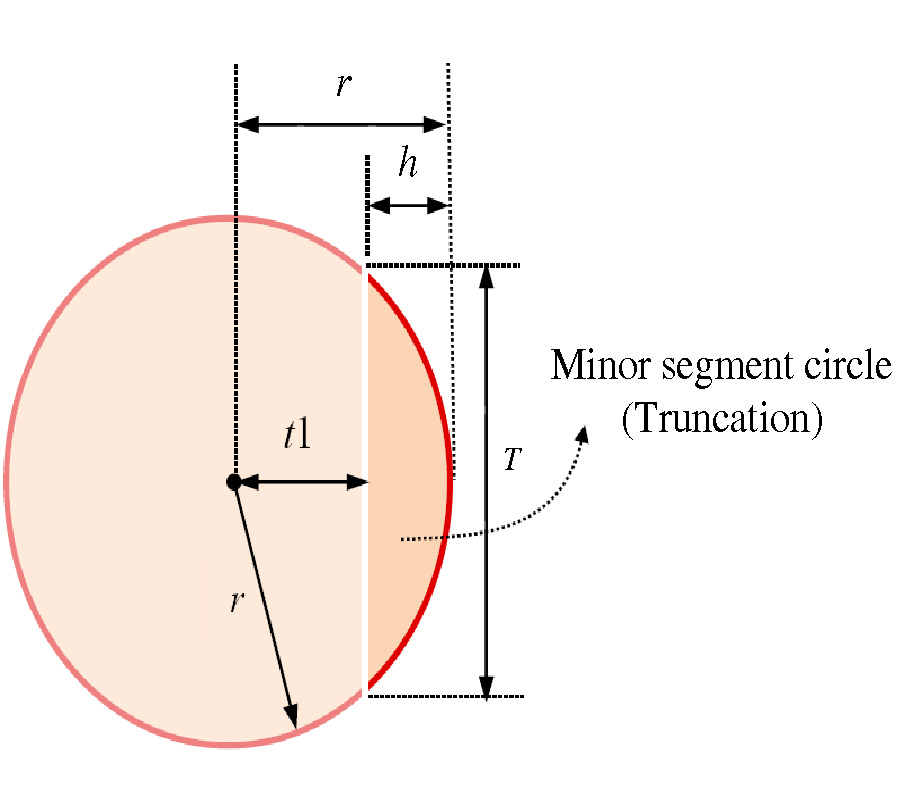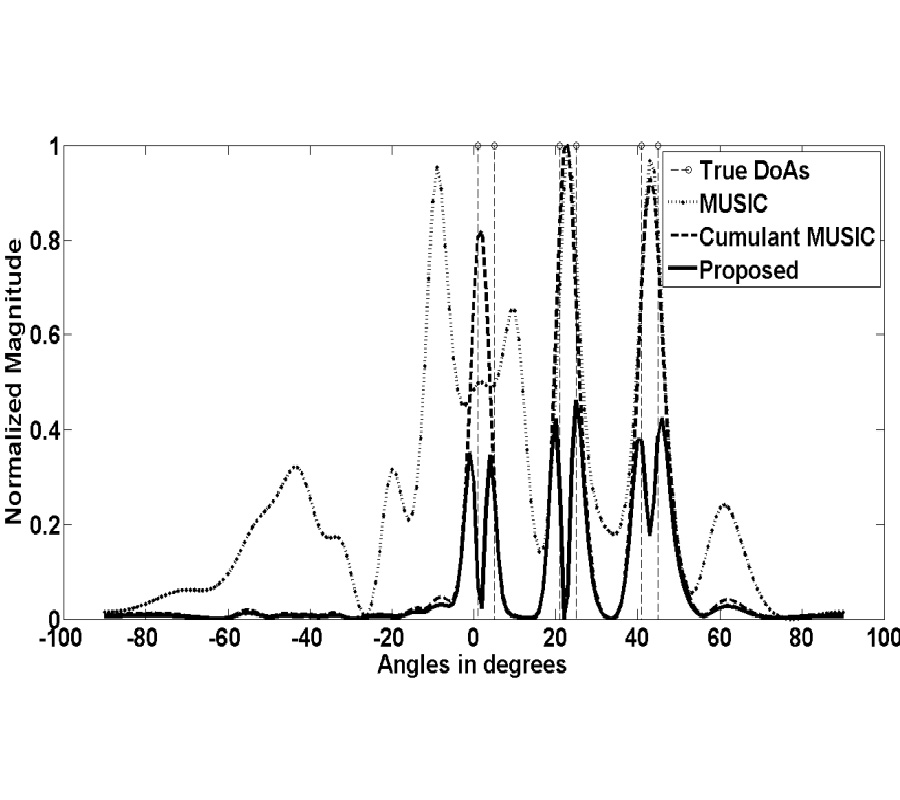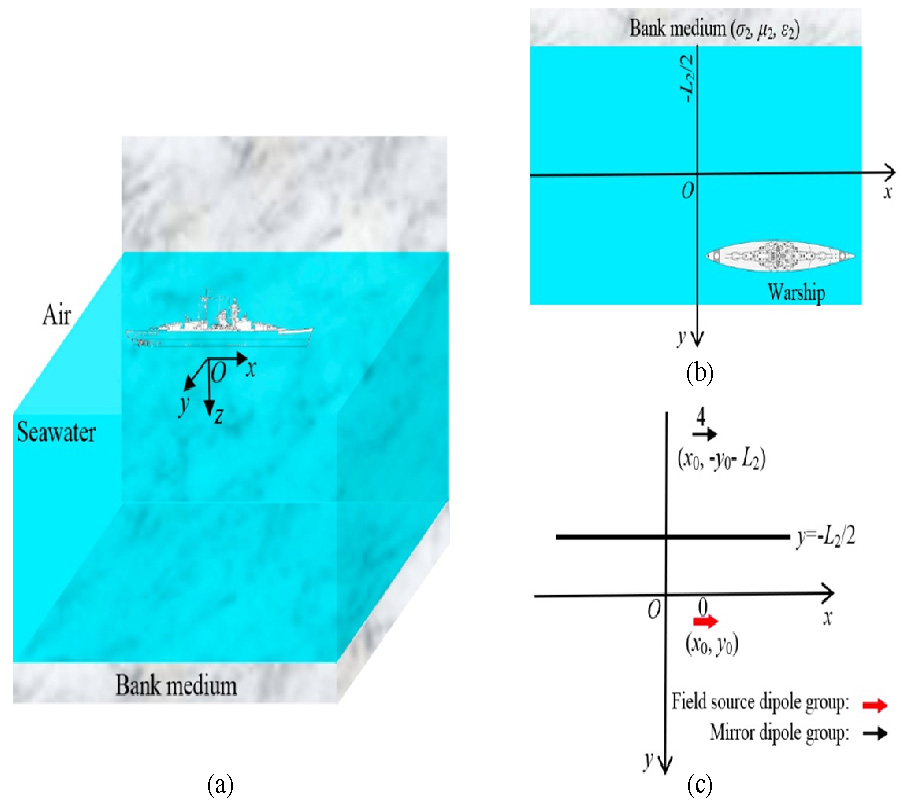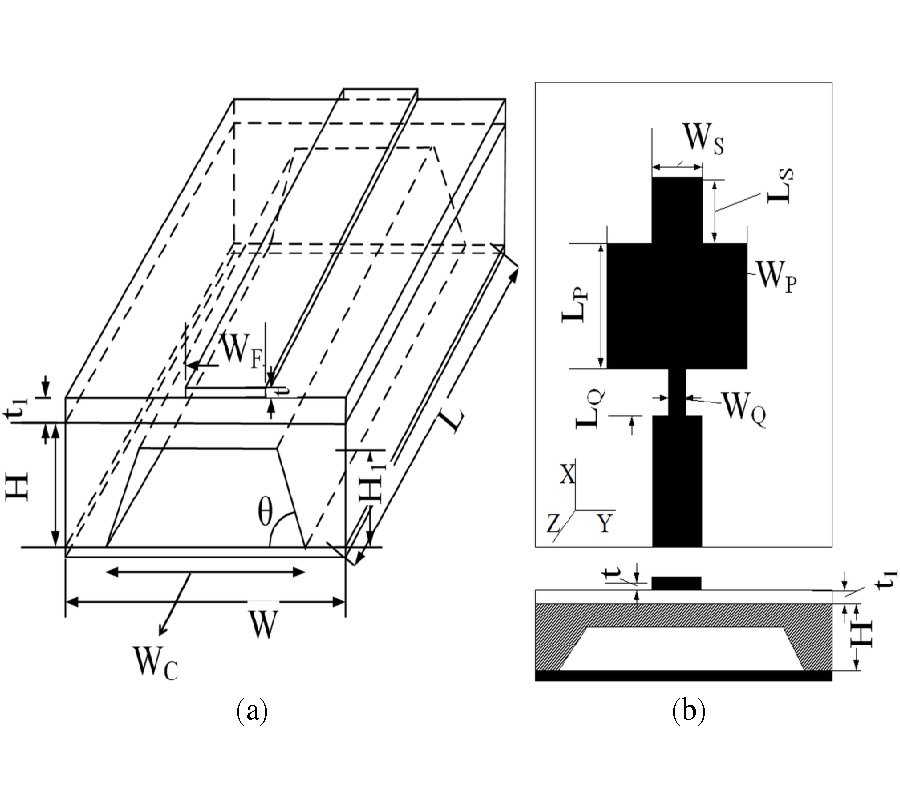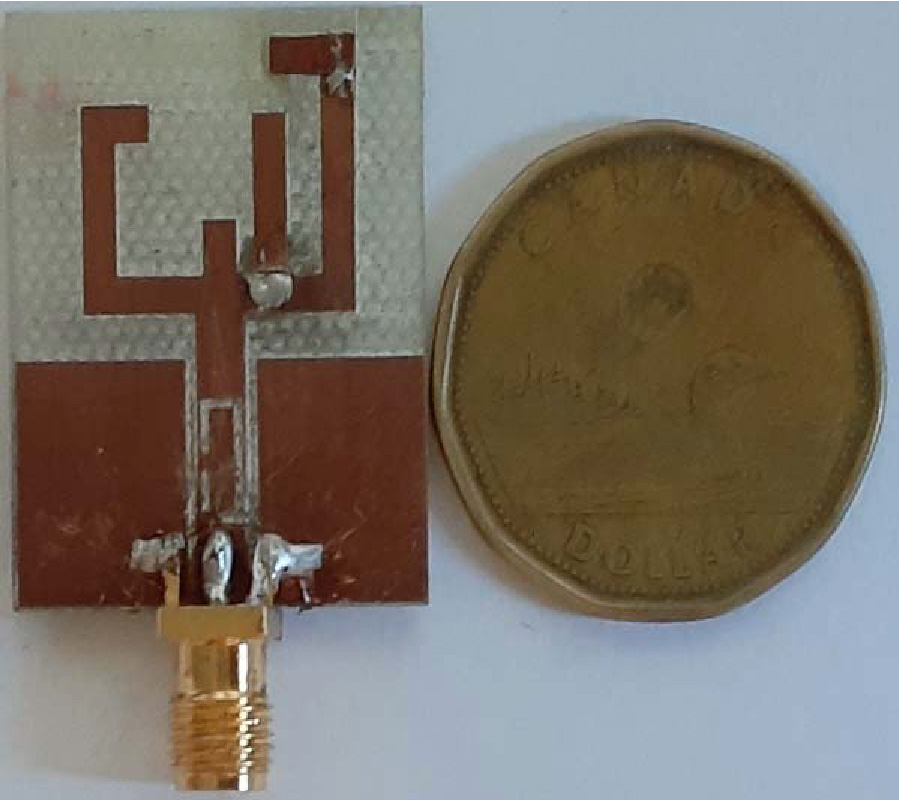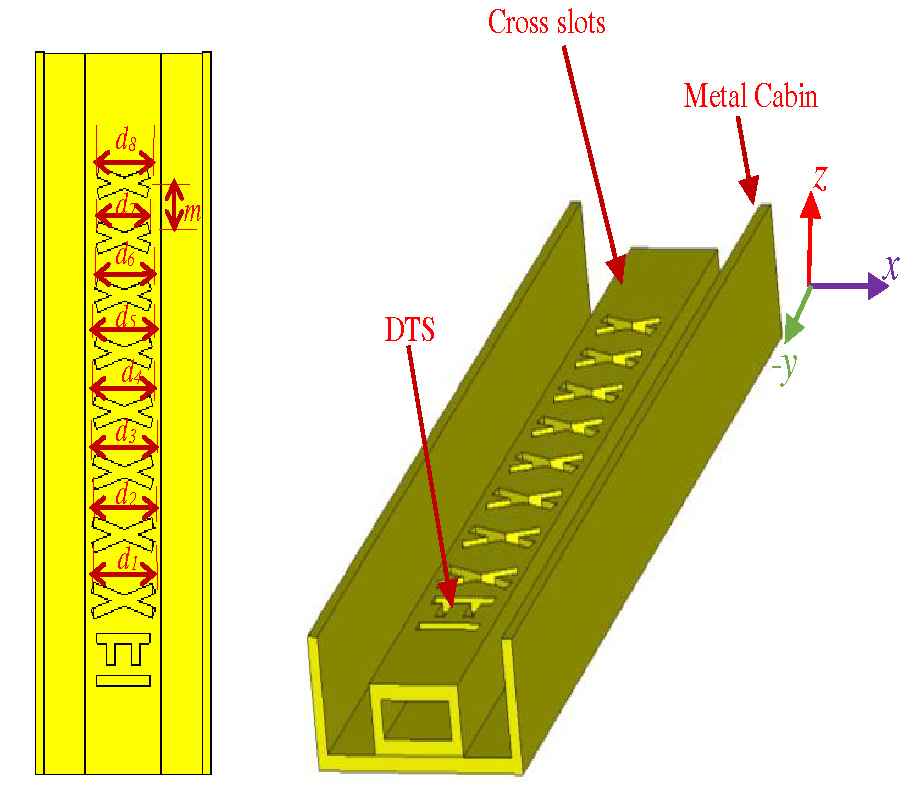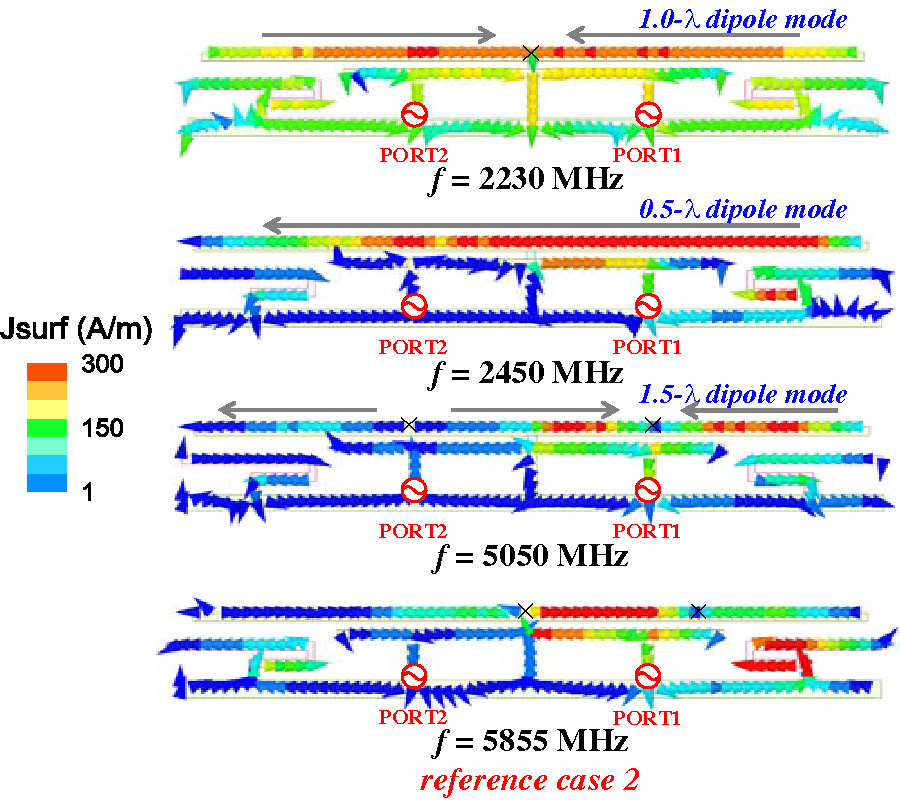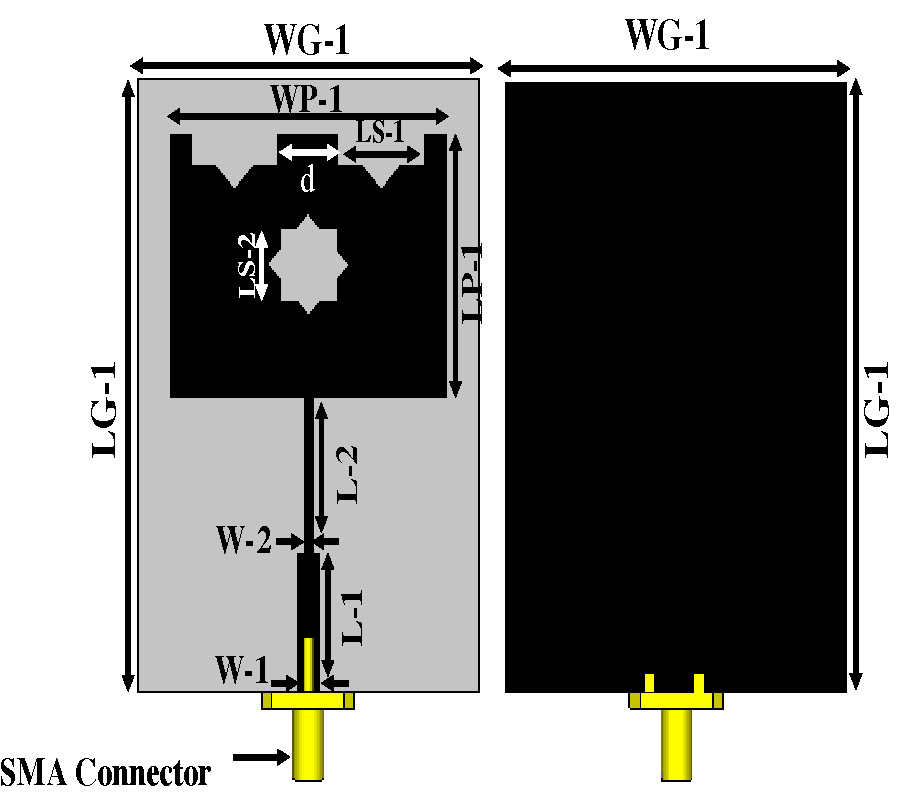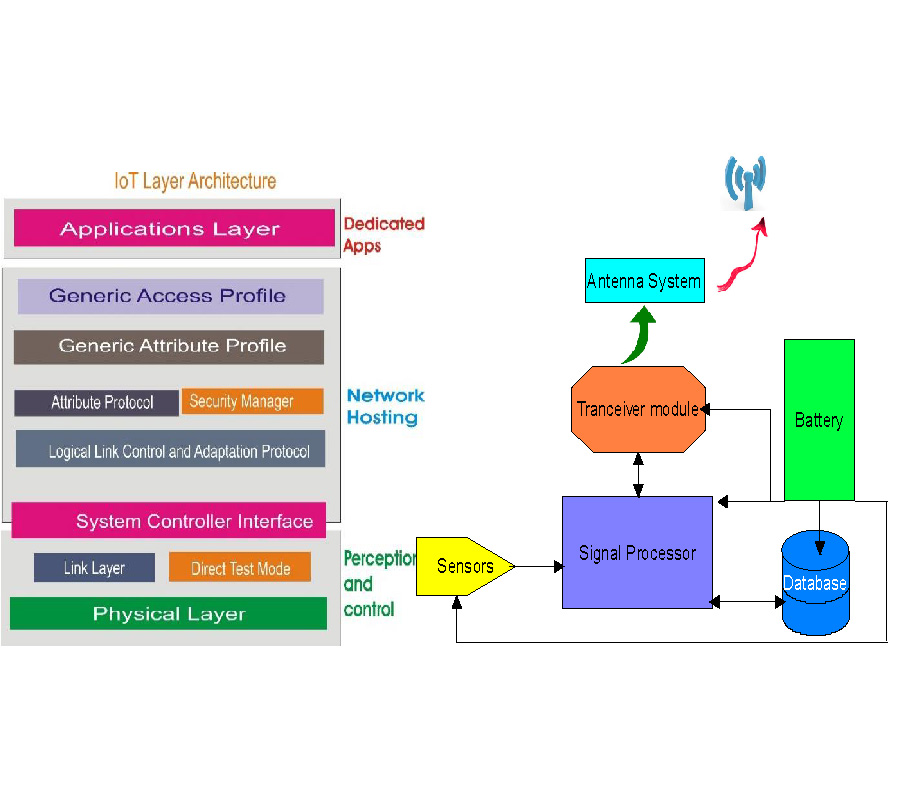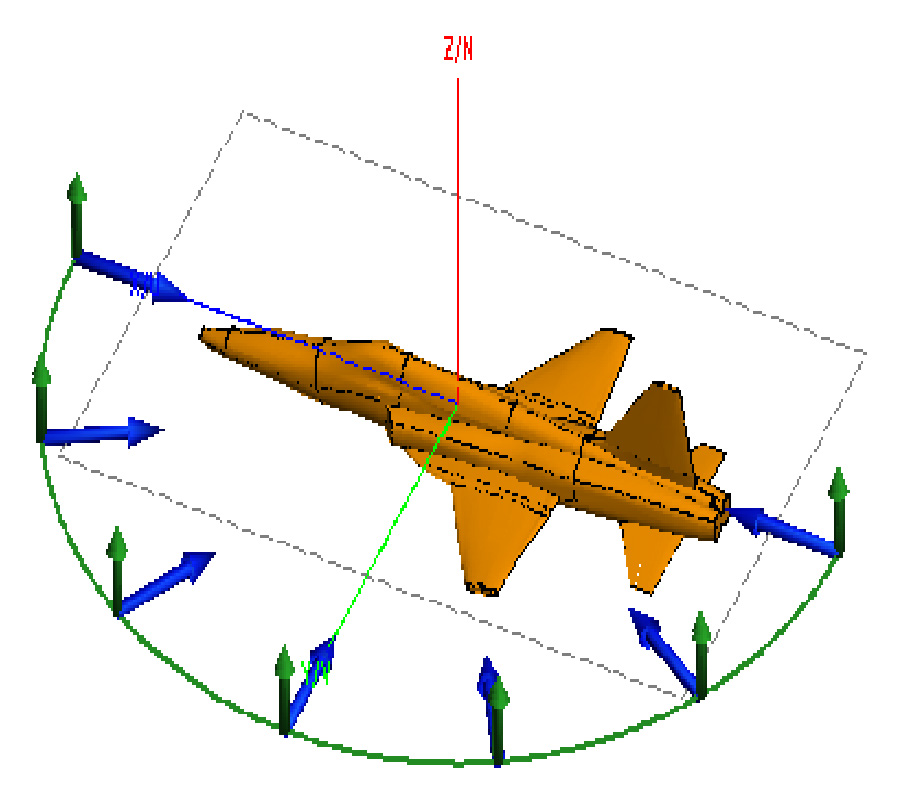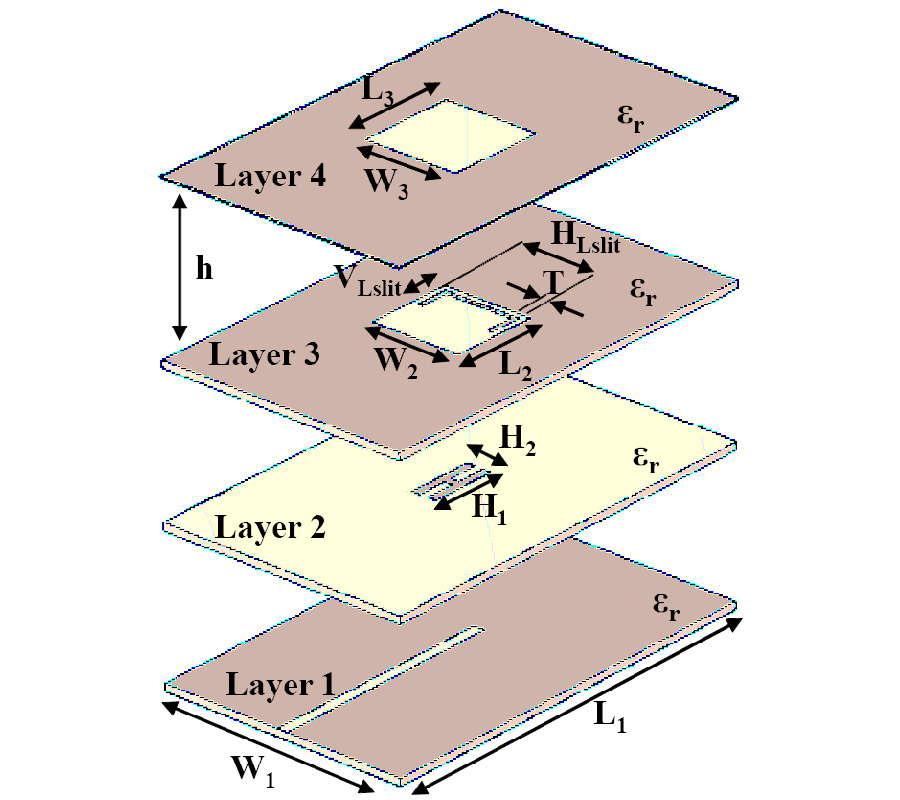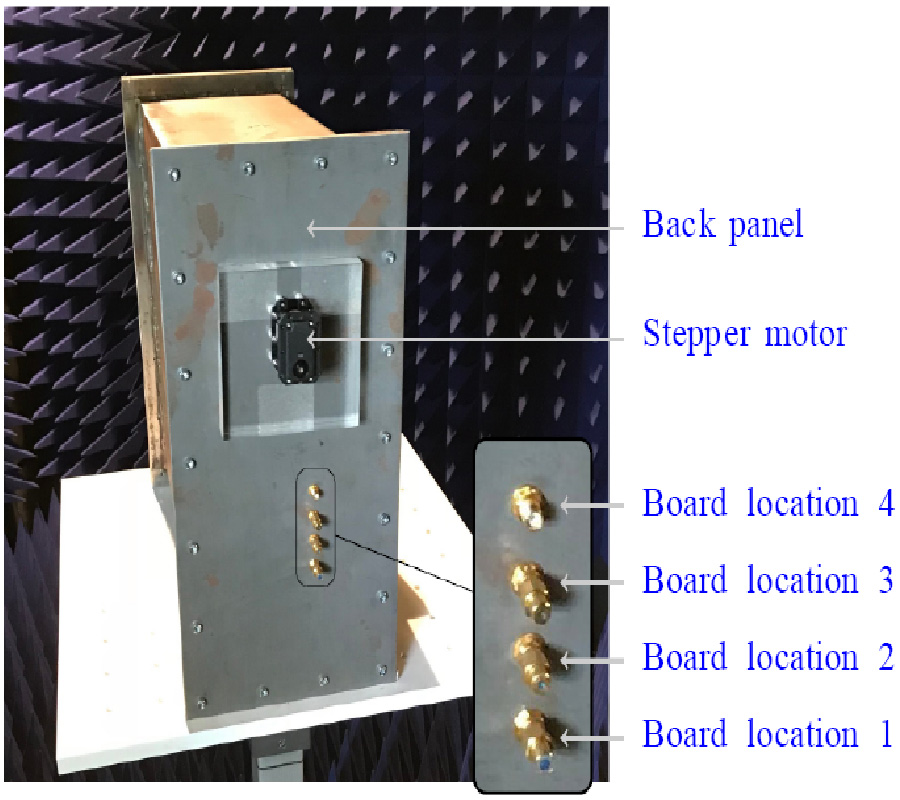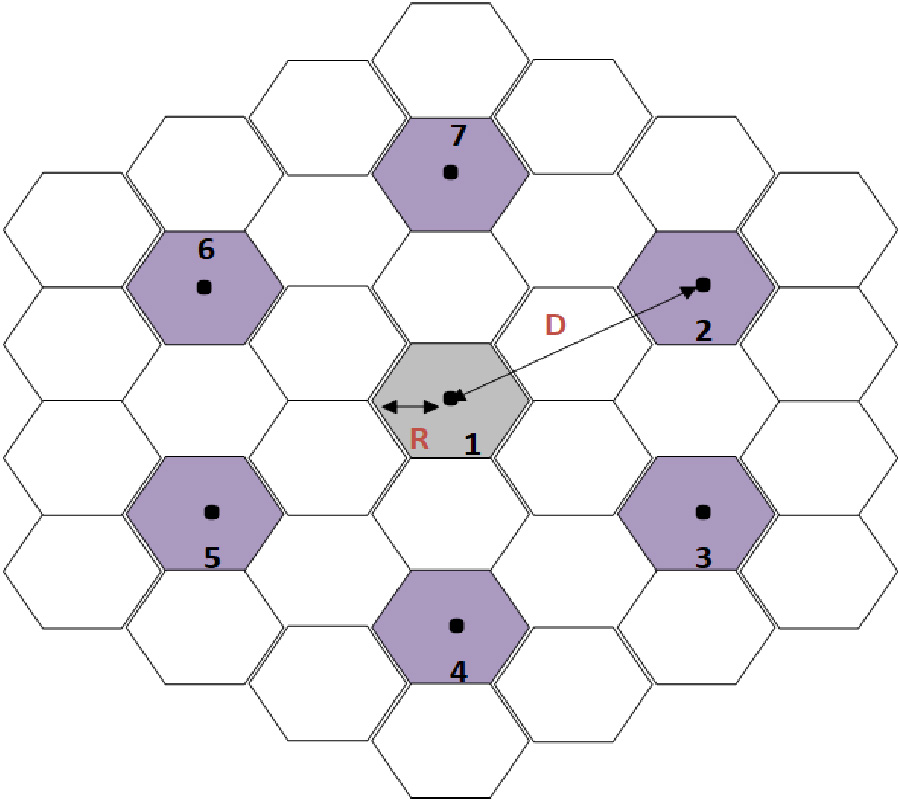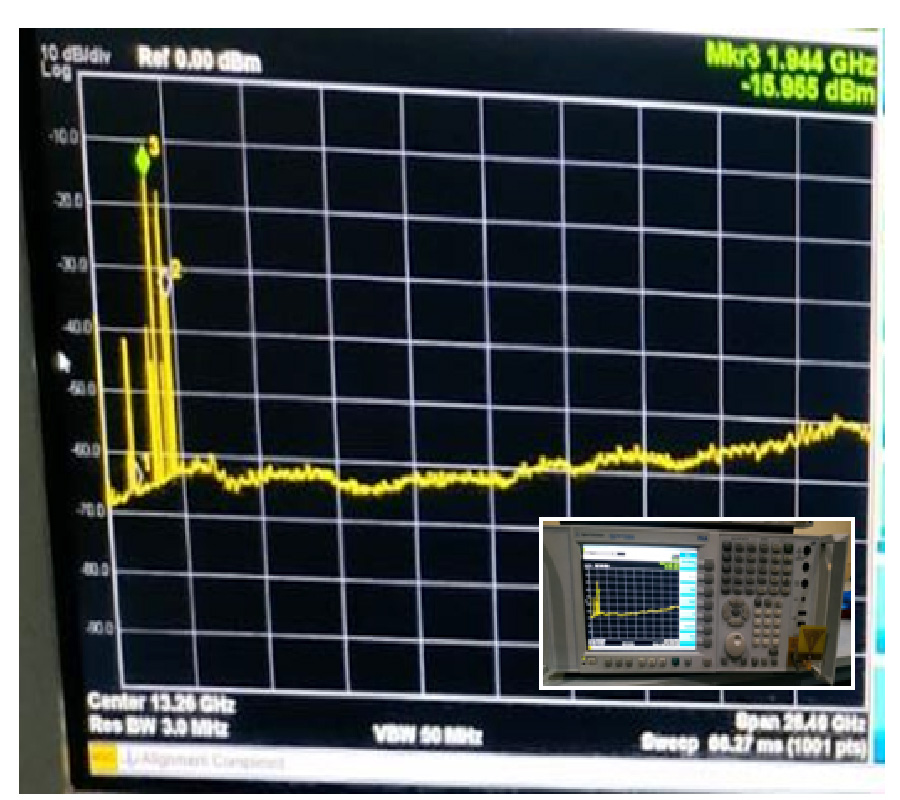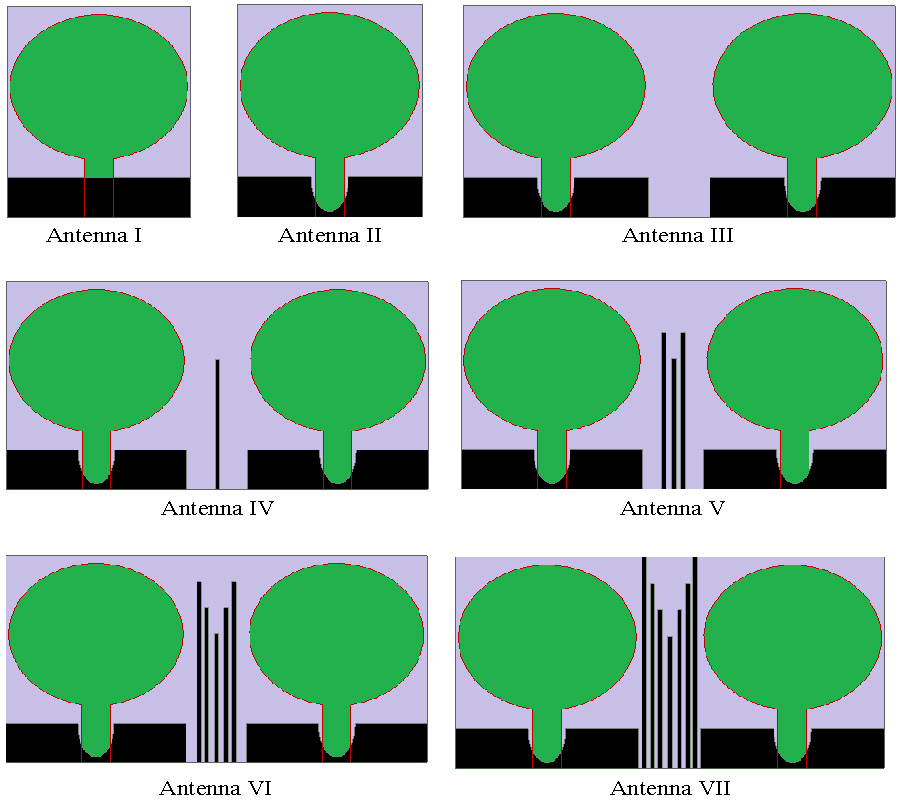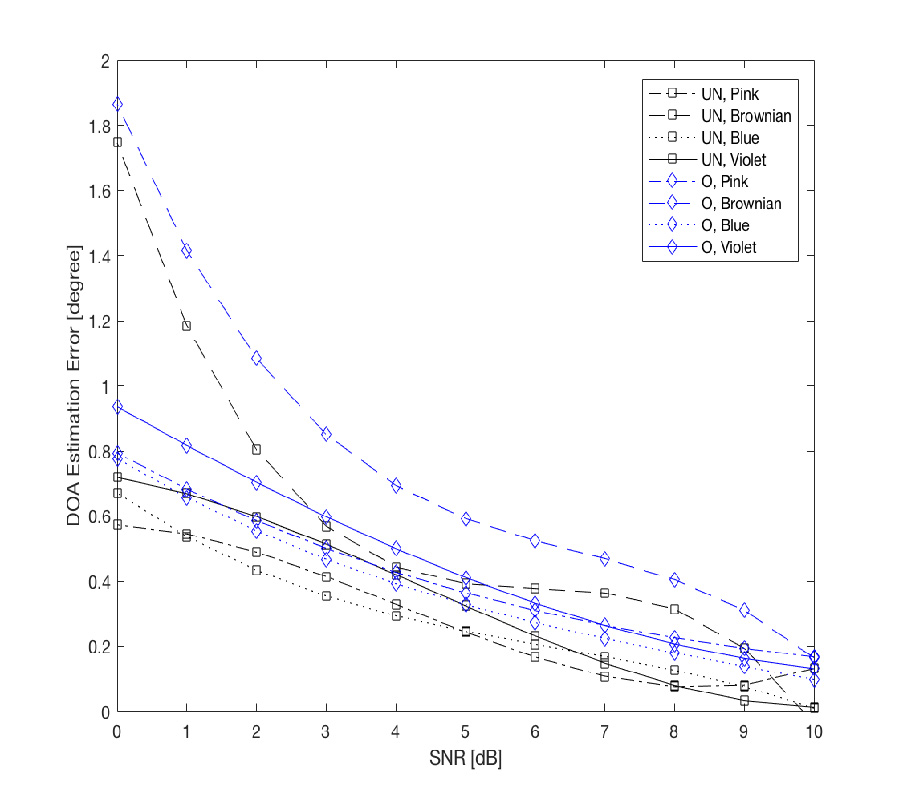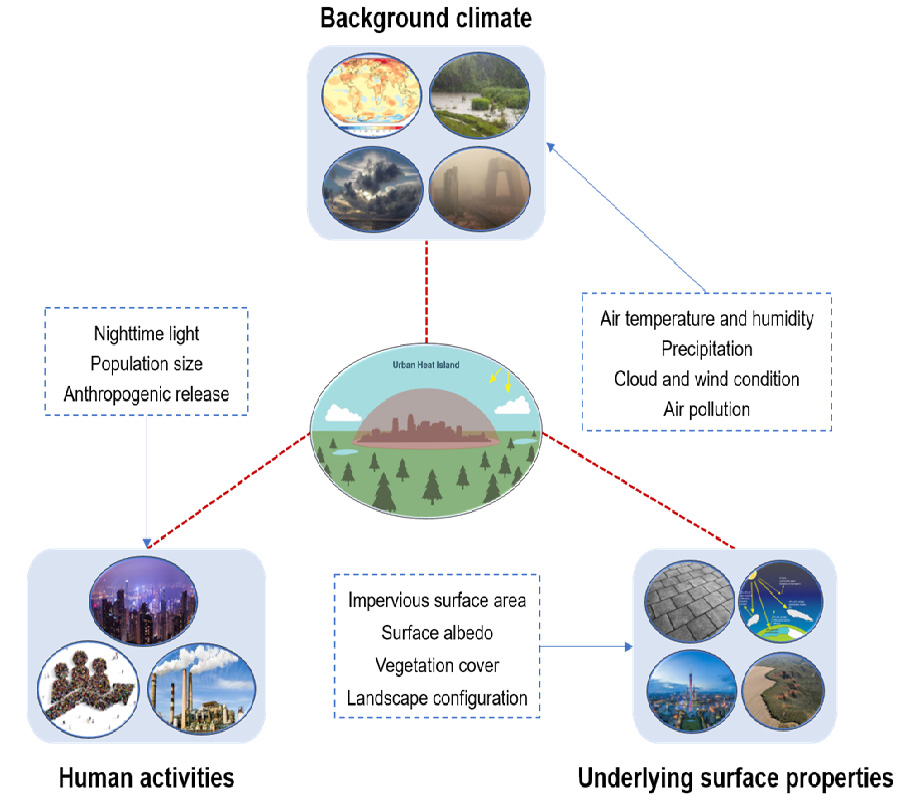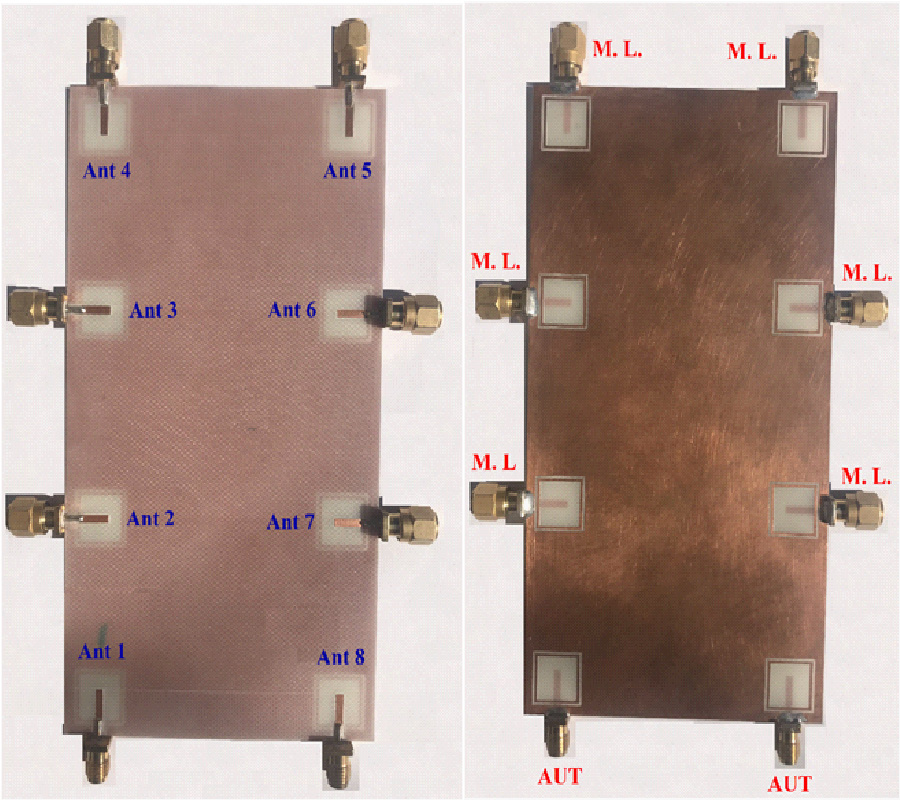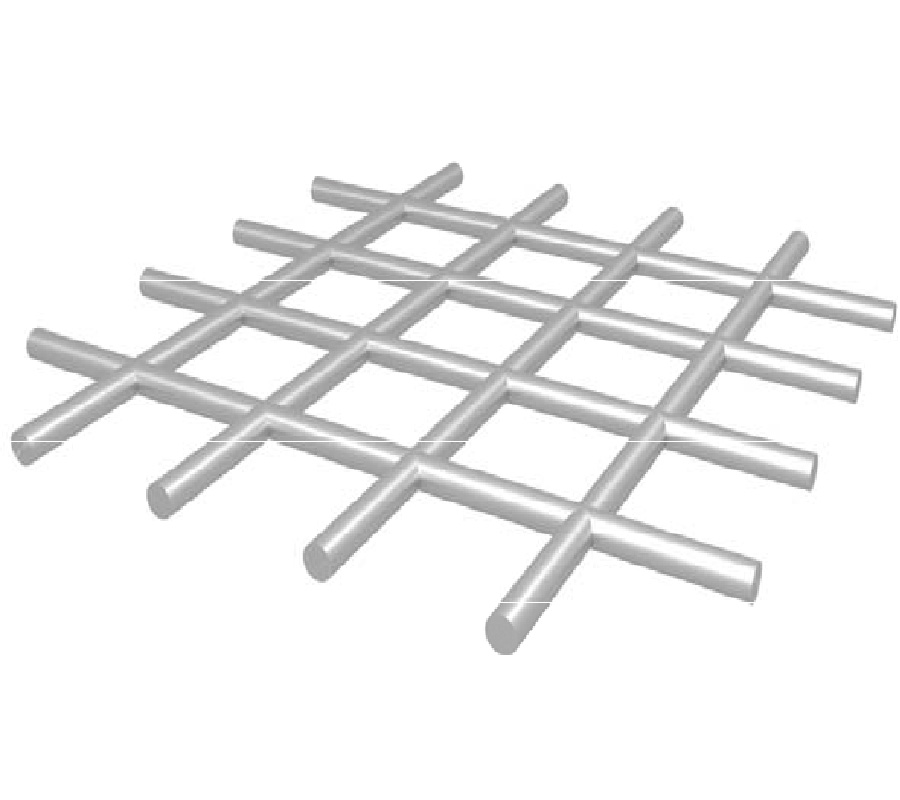Design, Analysis, and Optimization of Dual Side Printed Multiband Antenna for RF Energy Harvesting Applications
Rashmi Pandey,
Ashok Kumar Shankhwar and
Ashutosh Singh
In this paper, the performance of a compact, multiband, and dual side printed microstrip patch antenna is introduced. The proposed antenna configuration is designed using a nested triangular patch and defected ground structure (DGS). A simple rectangular DGS is constituted in the ground plane, which helps to enhance the multiband characteristics of the antenna with its size. The proposed design exhibits compact size, better radiation, and reflection characteristics over a multiband frequency ranging from 1 GHz to 6 GHz. These entire bands are allied with various wireless communication services, such as GSM 1400 MHz and 1900 MHz, ISM, WLAN, Bluetooth, LTE, Wi-Fi, and GPS applications. The receiving Triangular Nested Patch (TNP) antenna offers omnidirectional radiation with 4.45 dBi gain and maximum return loss -34.31 dB at 3.75 GHz. Moreover, extraction of parameters has been presented in this paper with the variation of feed width and ground length. The proposed design shows the enhancement of gain and improved return loss. A comparative analysis has also been shown with the four different antennas parameters. Furthermore, this paper also presents the compact structure to cover efficient frequency ranging from 1400 MHz to 5.8 GHz for radiofrequency energy harvesting applications.
